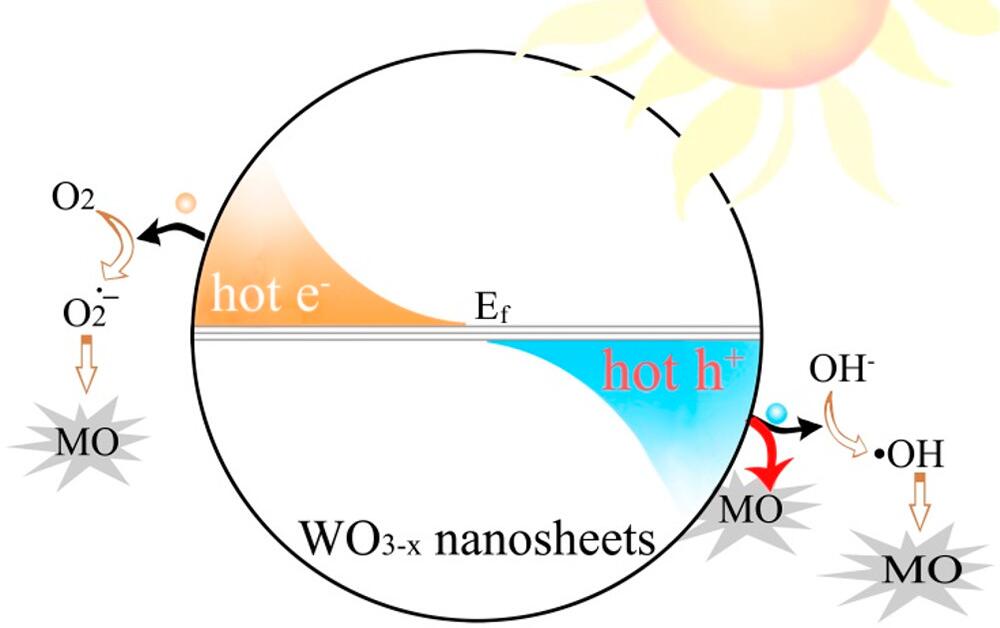
Some doped semiconductor, such as nonstoichiometric copper chalcogenides and oxygen-deficient metal oxides, showed surface plasmon resonance (SPR) effect, which usually existed in noble metal nanostructures. These materials are welcomed for their low cost. However, the optical response range of plasmonic semiconductor materials was mostly in the infrared region, which is not efficient for utilization of solar energy.
Recently, a metal oxide semiconductor was successfully made by a research team from the Institute of Solid State Physics of the Hefei Institutes of Physical Science(HFIPS), according to a paper published on ACS Sustainable Chemistry Engineering.
The material displays a localized surface plasmon resonance absorption at visible light range as the same as noble metal nanostructures. Moreover, it shows a high photocatalytic activity driven by plasmonic hot carriers.
In this research, scientists fabricated oxygen-deficient WO3-x nanosheets with solvothermal processing and follow-up thermal treatment in a hydrogen-containing atmosphere. By introducing a large number of oxygen vacancies which can induce significant increase of free charge carriers, the SPR showed up and the absorption band center blue shifted to 540 nm, which is the shortest absorption center wavelength compared with previously reported plasmonic semiconductors.
In addition, the catalytic performances of the plasmonic hot electrons and holes generated by damping of surface plasmon were investigated by loading a long-wave filter to rule out the contributions of photogenerated electrons and holes for the interband transition.
"It proves that this nanosheet has a good photocatalytic degradation effect on methyl orange," said MENG Guowen, who led the research, "the plasmonic hot holes and the superoxide radical play dominant roles in the photodegradation of methyl orange."
The work demonstrated that the plasmonic hot electrons and hot holes generated in WO3-x could be separated efficiently, and the hot holes could react directly with methyl orange. In contrast, in noble metal nanostructures, hot holes are difficult to directly oxidize the reactants due to their extremely short lifetime and relatively low energetic level.
As a result, other hole-collecting materials combined with metal or an applied external electrical field was usually required for effective utilization of hot holes.
This study shows the excellent properties of plasmonic semiconductor materials and their potential applications in photocatalysis and solar energy conversion.
The research was financially supported by the National Natural Science Foundation of China, the Natural Science Foundation of Anhui Province, and the Key Research Program of Frontier Sciences of the Chinese Academy of Sciences.

Figure 1. The (a)-(d) structural characterization, (e) light absorption, (f) photocatalytic rate degradation of methyl orange, and (g) contribution of different radicals or hot carriers of the as-prepared WO3-x nanosheets. (Image by TANG Haibin)

Figure 2. The schema of the photocatalytic degradation of methyl orange using the plasmonic WO3-x nanosheets. (Image by TANG Haibin)

86-10-68597521 (day)
86-10-68597289 (night)

52 Sanlihe Rd., Xicheng District,
Beijing, China (100864)

